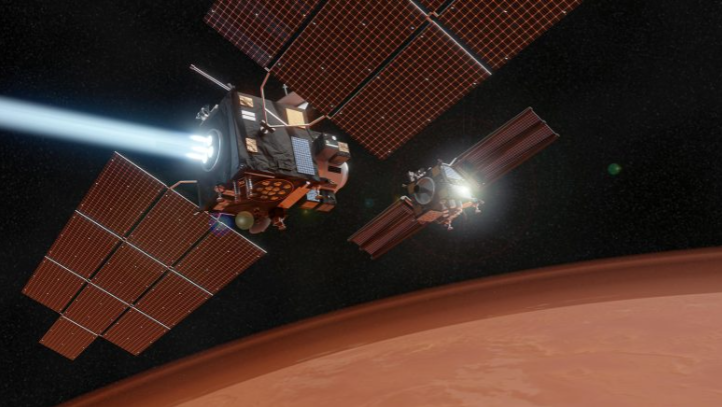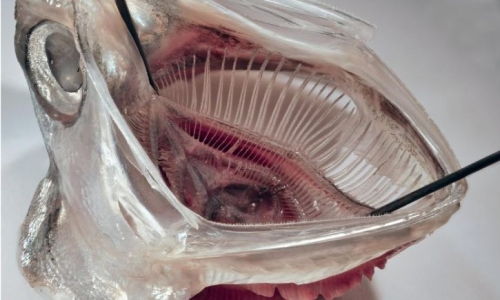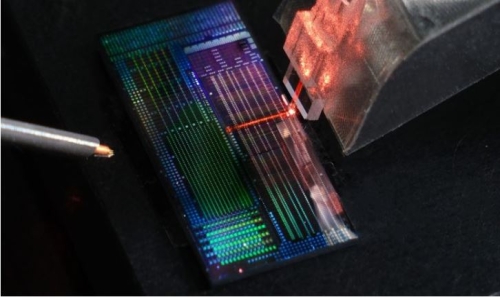


 1:35:33
1:35:33  2025-01-26
2025-01-26  892
892

This new era of exploration, backed by advanced technologies and international partnerships, aims to democratize interplanetary travel and expand it beyond Mars to other celestial bodies.
Exploring New Frontiers: ESA’s Return to Mars
Twenty years after the Mars Express mission, the European Space Agency (ESA) is shifting its focus to smaller, cost-effective missions to explore the Red Planet. Thanks to advancements in technology, new possibilities for interplanetary exploration are emerging. As part of ESA’s LightShip initiative, four industry consortia will carry out independent studies to design a compact and affordable Mars satellite platform that could travel as a passenger aboard the LightShip system.
Innovations in Mars Orbit Transfers
Currently in the feasibility and definition stage, ESA’s LightShip is a propulsive tug designed to address two major challenges of low-cost Mars missions. It provides the propulsion necessary to transport passenger spacecraft to Mars and help them enter orbit. Additionally, it carries the Mars Communication and Navigation Infrastructure (MARCONI), which offers a dedicated data relay service for communications between Mars and Earth.
The four selected consortia — led by Argotec, Deimos Space, Politecnico di Milano with SITAEL, and Redwire — will explore the potential for small satellite platforms that can hitch a ride to Mars with the LightShip tug. These studies are funded through ESA’s Basic Activities program under the preparation element, ensuring a strong foundation for future mission planning.
Affordable Access to Mars
“ESA’s LightShip concept aims to open up access to Mars for a wider community than is usually the case,” explains Claire Parfitt, Mars Exploration Study Team Lead in ESA’s Directorate of Human and Robotic Exploration and technical officer of the activity.
“It’s very exciting for us to be able to provide this opportunity, since building spacecraft for Mars missions is usually considered a task for large system integrators. Our member states asked for a wider participation in the exploration domain, and we’re really glad to have been able to help facilitate that. Moreover, the nature of LightShip is such that it makes us open to international partnerships as well.”
“Normally, we look at the whole mission, which makes this study a little unusual – this time we are only focusing on the platform, without any payload. That’s because we really want to understand what the small and low-cost platform capabilities are in Europe and how they need to be modified for the Mars environment. The next step will be to start thinking at mission level.”
Future Perspectives: Mars and Beyond
“This study fits in with the industrial Phase A/B1 for the LightShip-1 mission and will help to inform the passenger interfaces that will be needed. The Explore2040 strategy for future Mars missions starts with LightShip,” Claire adds. “In 2026, we plan to use the results from this study to investigate full exploration mission concepts. Those concepts could be future passenger candidates for LightShip.”
“Our vision doesn’t stop there – in the main LightShip study, we are looking at use cases for missions to the Moon, asteroids, and other destinations too.”
Reality Of Islam |
|

Researchers

A new chip-

A large inf

Choosing th
 9:3:43
9:3:43
 2018-11-05
2018-11-05
10 benefits of Marriage in Islam
 7:5:22
7:5:22
 2019-04-08
2019-04-08
benefits of reciting surat yunus, hud &
 9:45:7
9:45:7
 2018-12-24
2018-12-24
advantages & disadvantages of divorce
 11:35:12
11:35:12
 2018-06-10
2018-06-10
 6:0:51
6:0:51
 2018-10-16
2018-10-16
 2:2:13
2:2:13
 2022-10-08
2022-10-08
 6:28:21
6:28:21
 2022-12-20
2022-12-20
 10:35:40
10:35:40
 2022-05-26
2022-05-26
the happy life of mankind requirement
 6:36:36
6:36:36
 2022-01-25
2022-01-25
 2:11:12
2:11:12
 2022-10-15
2022-10-15
a hero waters thirsty wild animals
 9:4:9
9:4:9
 2022-01-06
2022-01-06
 10:47:11
10:47:11
 2022-11-22
2022-11-22
 5:41:46
5:41:46
 2023-03-18
2023-03-18
| LATEST |